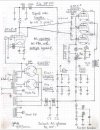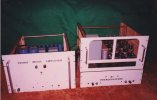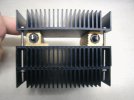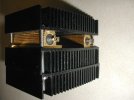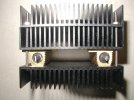RtoR King
Active Member
Have you run calculations for the design of this new triple 6005 amp? You have preached that paralleling even twin tube sections is no good. Even in rectifier tubes! Not all of us agree with that but when it comes to parallel output tubes, there are new design problems to deal with beyond just matched tubes. Just on the surface, miller capacitance goes up and output impedance goes down. Your OPT's are probably going to need a custom wind.MY REPORT : The 6005 tube itself, ( as I am running it ), is far superior to any other output tube I have experienced in all of my listening, such that I do not mind paralleling three ( matched and balanced ) tubes in the output stage. ( VS one single 6005 output tube, which plays purer . )
There are some traditional good tube choices for 8-12 watt SET, like the 300B. And as you like trying new things how about looking at TV horizontal sweep tubes. Some have impressive power dissipation capabilities with low plate voltages to boot. Now they are class C devices but can be biased into class A with some reduction in dissipation which you like to do anyway.


